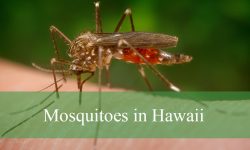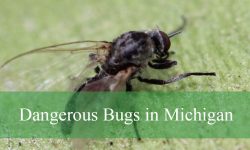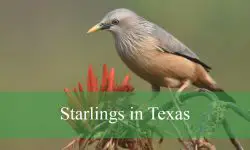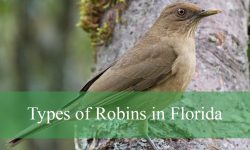Michigan, with its diverse landscapes ranging from dense forests to sprawling urban areas, is home to a fascinating array of wildlife. Among these creatures, the opossum stands out as one of the most adaptable and intriguing mammals. Often misunderstood due to its nocturnal habits and scavenging behavior, the opossum plays a crucial role in Michigan’s ecosystem. In this guide, we will explore the types of opossums found in the state, their behavior, habitats, feeding patterns, reproduction, and where you are most likely to observe them.
Opossums are North America’s only marsupial species, meaning that females carry and nurse their young in a pouch, similar to kangaroos. In Michigan, they have adapted to urban, suburban, and rural environments, demonstrating incredible resilience. Understanding these creatures helps to appreciate their role in controlling insect and small rodent populations, as well as their part in the natural cleanup process through scavenging.
Types of Opossums in Michigan
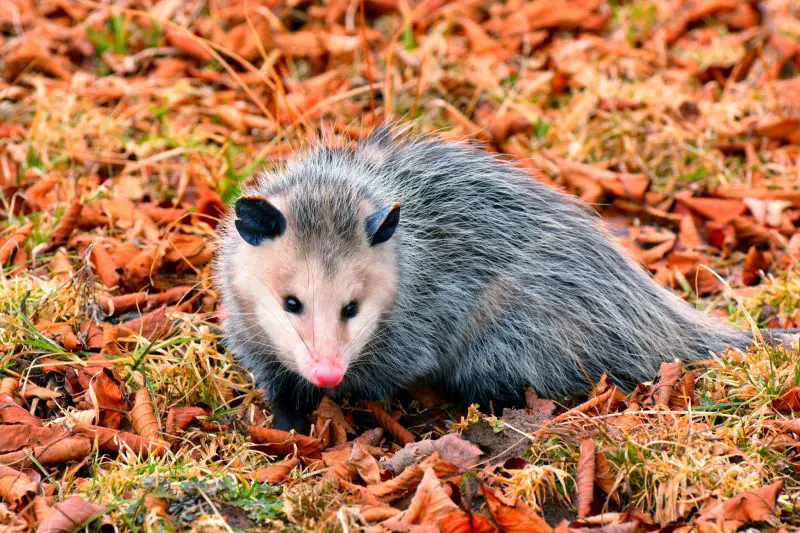
In Michigan, the opossum population is dominated by a single species, the Virginia opossum (Didelphis virginiana). Despite being a single species, they display variations in size, color, and behavior depending on their environment. The Virginia opossum has successfully expanded its range northward over the past century, thriving in both wooded areas and suburban neighborhoods.
Virginia opossums are medium-sized marsupials, with adults typically weighing between 4 to 14 pounds, although some individuals can exceed this range in areas with abundant food sources. Males tend to be larger than females, and their tails, which are hairless and prehensile, help them balance while climbing trees or foraging for food. Their fur can range from gray to a brownish-white shade, often with a slightly scruffy appearance that adds to their distinctive look.
Although there is only one species in Michigan, their adaptability means that observing them in the wild can present a variety of appearances. In urban areas, opossums are often slightly smaller and leaner, while forest-dwelling individuals may be bulkier due to seasonal fat accumulation.
Physical Characteristics and Identification
Virginia opossums have a unique appearance that makes them relatively easy to identify for those familiar with local wildlife. Their pointed snout, rounded ears, and long whiskers give them a slightly rat-like appearance, while their hairless prehensile tail is a signature feature that distinguishes them from other small mammals. The tail can grasp branches and even objects, helping them climb or stabilize themselves in precarious positions.
Their fur is typically coarse, with shades of gray dominating, although tinges of white around the face, ears, and underbelly are common. Opossums have five toes on each foot, with opposable thumbs on their hind feet, a feature that aids in climbing and grasping objects. Their teeth are sharp and numerous, with up to 50 teeth, the highest number among North American mammals, which allows them to consume a wide variety of foods.
Adult Virginia opossums in Michigan usually measure between 24 to 39 inches from nose to tail tip. Males are larger than females, and their heads appear broader, with slightly more robust bodies. Juveniles are smaller, often weighing less than a pound, and may have a more pronounced white face and darker markings, making them particularly photogenic when spotted in the wild.
Behavior and Activity Patterns
Opossums are nocturnal creatures, which means they are most active at night, emerging from their dens to forage for food. Despite their sometimes sluggish daytime appearance, opossums are surprisingly agile climbers and can move quickly when threatened. Their defensive behavior includes the well-known “playing dead” or thanatosis, where they collapse, emit a foul-smelling secretion from their anal glands, and appear lifeless to potential predators. This behavior can last from a few minutes to several hours and is highly effective against predators such as coyotes, foxes, and domestic dogs.
Opossums are generally solitary animals outside of the breeding season. They do not establish permanent territories but may have overlapping ranges with other individuals. These ranges are typically determined by the availability of food and shelter, with males roaming further than females. Opossums communicate through hissing, growling, and clicking noises, which are often heard during nighttime activity.
Despite their nocturnal nature, opossums are tolerant of human presence and are known to forage in urban areas. They often take advantage of unsecured garbage, pet food, and garden crops. Their cautious yet opportunistic behavior allows them to thrive in environments that many other wildlife species find challenging.
Habitat and Distribution in Michigan
Virginia opossums in Michigan occupy a range of habitats, including deciduous forests, wetlands, fields, and urban environments. They prefer areas with dense vegetation or structures that offer shelter, such as hollow logs, abandoned burrows, or brush piles. In suburban areas, opossums often use attics, sheds, and under-deck spaces for nesting.
Michigan’s northern expansion of opossums has been facilitated by warming winters and the availability of human-provided food sources. While more abundant in the southern Lower Peninsula, opossums are now found throughout most of the state, occasionally reaching areas near the Great Lakes where food and shelter are sufficient. Their adaptability allows them to inhabit both natural and human-altered landscapes, often near water sources, which provide additional food options and protection.
Opossums are solitary but flexible regarding den sites. In the winter, they may share dens with other wildlife or occupy tree cavities to stay warm. Snow cover and freezing temperatures can limit their activity, but they rely on stored fat and sheltered dens to survive harsh conditions.
Feeding Habits and Diet
Opossums are omnivorous scavengers, consuming a wide variety of foods, which contributes to their adaptability. Their diet includes insects, small rodents, birds, fruits, vegetables, carrion, and even human refuse. They are opportunistic feeders and can consume almost anything edible that they encounter, which is why they are often found near residential areas.
In spring and summer, insects, worms, and small reptiles dominate their diet, while fruits and berries become more important in the fall. Opossums also play a vital ecological role by controlling tick populations, reducing the risk of Lyme disease in Michigan. They are immune to many snake venoms, allowing them to consume snakes that might threaten other small mammals.
Opossums typically forage at night, using their keen sense of smell and touch to locate food. Their nimble fingers and opposable thumbs make it easy to manipulate small objects, open containers, and explore crevices for hidden prey. This resourcefulness, combined with their ability to eat a wide range of foods, ensures they remain a persistent and adaptable presence in Michigan ecosystems.
Reproduction and Life Cycle
Opossums have a short but intense reproductive cycle, with breeding typically occurring from February through June. Females can have one or two litters per year, each consisting of up to 13 young, though survival rates for all offspring are low. The young are born extremely undeveloped, about the size of a honeybee, and immediately crawl into the mother’s pouch to continue developing.
The pouch serves as a safe environment for the young to nurse and grow for approximately 2 to 3 months. After leaving the pouch, juveniles often ride on their mother’s back for an additional 2 months, learning essential survival skills such as climbing and foraging. By late summer, they are usually independent but may remain in the same general area as their mother for several months.
Opossums have a short lifespan, generally living only 2 to 4 years in the wild due to predation, disease, and environmental challenges. Despite this, their reproductive efficiency ensures that populations remain stable or grow in favorable conditions, particularly in urban and suburban areas where predation is reduced.
Fun Facts About Opossums
Opossums are full of surprises and often misunderstood due to myths and misconceptions. One of the most fascinating aspects of opossums is their immunity to venom from snakes like rattlesnakes and copperheads, which allows them to prey on reptiles that other mammals cannot.
Their “playing dead” behavior is not a conscious act but an involuntary response to extreme fear. While it may seem comical to humans, this tactic is highly effective against predators, ensuring survival in many encounters. Opossums are also remarkably clean animals, grooming themselves meticulously like cats, despite their scavenger reputation.
Another intriguing fact is that opossums have a prehensile tail, which can grasp and support their weight temporarily. This tail, combined with their opposable thumbs on their hind feet, makes them excellent climbers and capable of navigating trees and rough terrain efficiently. Additionally, opossums have a lower body temperature than many mammals, which makes them less susceptible to rabies, a disease often associated with wild carnivores.
Best Viewing Spots in Michigan
Observing opossums in Michigan requires patience and a bit of nighttime exploration. The southern Lower Peninsula offers the highest concentration due to warmer winters and abundant food sources. Forested areas near water bodies, such as the Huron-Manistee National Forests, provide excellent opportunities to see these nocturnal mammals in their natural habitat.
Suburban areas with wooded backyards, brush piles, and bird feeders are also prime spots for spotting opossums. Late spring through early fall is the ideal season to observe them, as young opossums may be riding on their mother’s back, offering a rare glimpse into their family dynamics. Roadside sightings are common at night, although caution is advised due to traffic hazards.
In urban parks and nature reserves, such as Kensington Metropark and Belle Isle Park, opossums can often be spotted scavenging near walking trails and picnic areas after sunset. The best approach is to quietly observe from a distance with the aid of a flashlight or night-vision equipment, as sudden movements or loud noises may cause them to retreat.
Conservation and Human Interaction
While opossums are abundant and adaptable, their presence in urban areas can lead to conflicts with humans. They may scavenge garbage, enter attics or sheds, and occasionally frighten pet owners. However, they are non-aggressive and typically avoid confrontation, making coexistence manageable with proper precautions such as securing food sources and blocking access to potential den sites.
Opossums contribute significantly to the ecosystem by controlling pests, cleaning up carrion, and dispersing seeds. Educating the public about their ecological benefits and dispelling myths can foster better appreciation and reduce unnecessary harm to these animals. Wildlife rehabilitation centers in Michigan often care for injured or orphaned opossums, releasing them back into safe habitats once they are healthy.
FAQs About Opossums in Michigan
What is the lifespan of an opossum in Michigan?
Opossums in Michigan typically live 2 to 4 years in the wild, with predation and environmental factors limiting their longevity.
Are opossums dangerous to humans or pets?
Opossums are generally non-aggressive and pose little threat. They may hiss or growl if cornered but rarely attack.
Can opossums carry diseases?
While they can carry parasites or bacteria, opossums are less likely to transmit rabies compared to other wild mammals due to their lower body temperature.
When is the best time to see opossums in Michigan?
Nighttime is ideal, particularly during spring and summer when juveniles are more visible riding on their mother’s back.
How can I attract or safely observe opossums?
Providing natural cover such as brush piles or observing near wooded areas with fruiting plants can increase the chances of sightings. Avoid direct contact and secure food sources to prevent dependency.

